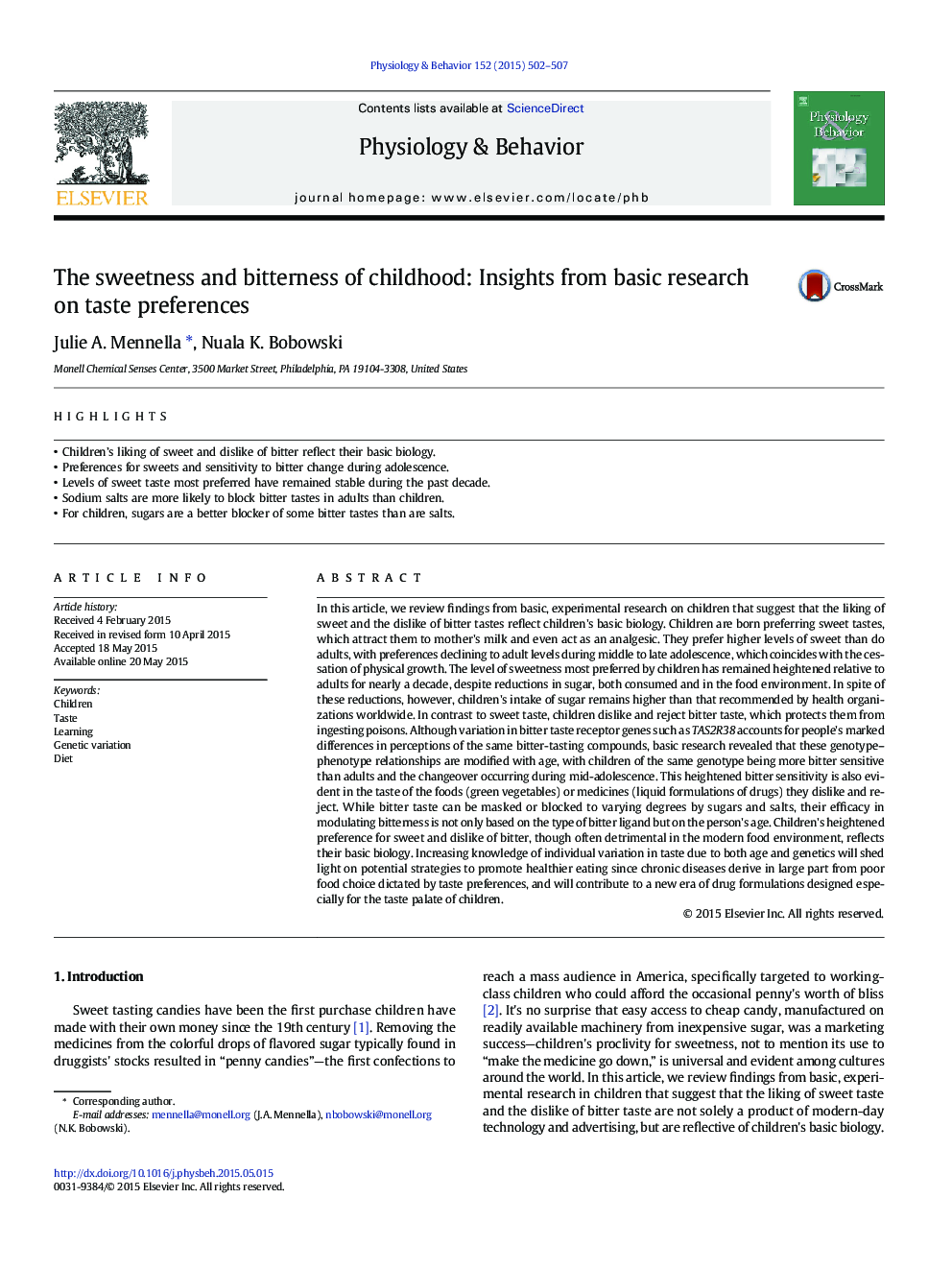| کد مقاله | کد نشریه | سال انتشار | مقاله انگلیسی | نسخه تمام متن |
|---|---|---|---|---|
| 5923212 | 1166294 | 2015 | 6 صفحه PDF | دانلود رایگان |
- Children's liking of sweet and dislike of bitter reflect their basic biology.
- Preferences for sweets and sensitivity to bitter change during adolescence.
- Levels of sweet taste most preferred have remained stable during the past decade.
- Sodium salts are more likely to block bitter tastes in adults than children.
- For children, sugars are a better blocker of some bitter tastes than are salts.
In this article, we review findings from basic, experimental research on children that suggest that the liking of sweet and the dislike of bitter tastes reflect children's basic biology. Children are born preferring sweet tastes, which attract them to mother's milk and even act as an analgesic. They prefer higher levels of sweet than do adults, with preferences declining to adult levels during middle to late adolescence, which coincides with the cessation of physical growth. The level of sweetness most preferred by children has remained heightened relative to adults for nearly a decade, despite reductions in sugar, both consumed and in the food environment. In spite of these reductions, however, children's intake of sugar remains higher than that recommended by health organizations worldwide. In contrast to sweet taste, children dislike and reject bitter taste, which protects them from ingesting poisons. Although variation in bitter taste receptor genes such as TAS2R38 accounts for people's marked differences in perceptions of the same bitter-tasting compounds, basic research revealed that these genotype-phenotype relationships are modified with age, with children of the same genotype being more bitter sensitive than adults and the changeover occurring during mid-adolescence. This heightened bitter sensitivity is also evident in the taste of the foods (green vegetables) or medicines (liquid formulations of drugs) they dislike and reject. While bitter taste can be masked or blocked to varying degrees by sugars and salts, their efficacy in modulating bitterness is not only based on the type of bitter ligand but on the person's age. Children's heightened preference for sweet and dislike of bitter, though often detrimental in the modern food environment, reflects their basic biology. Increasing knowledge of individual variation in taste due to both age and genetics will shed light on potential strategies to promote healthier eating since chronic diseases derive in large part from poor food choice dictated by taste preferences, and will contribute to a new era of drug formulations designed especially for the taste palate of children.
Journal: Physiology & Behavior - Volume 152, Part B, 1 December 2015, Pages 502-507
